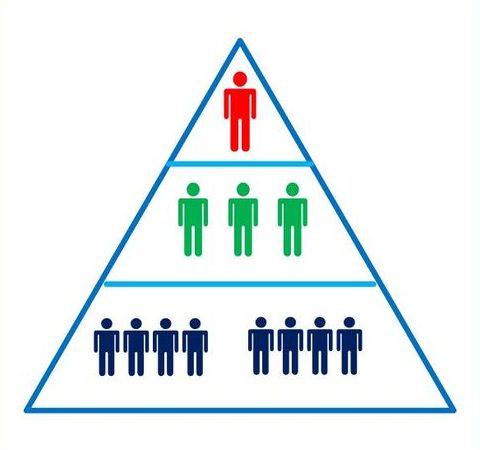The first step of problem solving is to define the problem. Although this may sound trivial, in many cases it is not. Many people and organisations rush in to tackle a problem by finding a solution, without previously knowing that the problem really is. So, to achieve a solution, one first has to fully understand the problem. Once the problems have been clearly defined, the most important factor in solving it is creativity. Creativity is required in order to create a ask the right questions about the problem and find the correct and appropriate answers to them, creativity is necessary in order to provide “out of the box” ideas and suggestions and creativity is what defines the process of finding a new way in doing things. Brainstorming is a very popular way to solve a problem and it is a characteristically creative method. It involves the rapid exchange of ideas, Continue reading
Modern Management Concepts
Implementing BPR in Hierarchical Authority Organizations
Today the business world is characterized by unpredictable changes, under the global competition and the customers’ demands. To be successful in such an environment, a firm must operate with speed, flexibility, low overheads and a clearly defined customer focus. The term business process reengineering (BPR) refers to an approach that is used by organizations seeking improvements in their business performance. Organizations consider BPR as an important tool of organizational improvement, as it helps them achieve the radical change necessary for today’s volatile business environment. Additionally, BPR stresses the importance of linkages within an organisation. Though its structure integrated processes are generated concerning the nature of people’s jobs and how people are grouped and organized in the working environment. What is more, through BPR people’s jobs become multidimensional instead of narrow and traditional task orientation. When the concept of process is promoted in the BPR, cross boundary teamwork is incorporated and Continue reading
Change Management Models – The Satir Change Model
Managing change in today’s organizations is not easy but doing it well is the new imperative. If companies want to survive and strive in today’s highly competitive environment, they have change quickly and yet successfully. Managing changes is now a core competency where organizations fall short in the race to adopt it. The increasing pace of change coupled with accelerating uncertainty. Change is something that makes people upset and has the higher potential of failures, loss production or failing quality. On the other end, there is a positive side of change, where the effects of change are important to the survival of the organization. From the perspective of employees both definition and understanding is essence to successfully managing change. As mentioned before uncertainty, a fear of unknown or an expectation of loss make people resistant to change. To eliminate this discomfort we have to make sure that people perceive the Continue reading
Value Analysis – Definition, Mechanism and Process
Value Analysis (VA) was established by Lawrence D. Miles of General Electric in America. The basic fundamental of value analysis can be implemented in any product to optimize its value. In more details, value analysis is actually a process of systematic review that is applied to existing product designs in order to compare the function of the product required by a customer to meet their requirements at the lowest cost by eliminating unnecessary costs that consistent with the specified performance and reliability needed. First of all, value analysis (and value engineering) is a formal and organized process of analysis and evaluation which required management activities including planning, control and coordination. These analysis concerns the function of a product such as utility, guarantee, or safety performance to meet the demands needed or required by a customer. Thus, to meet this functional requirement the review process must include an understanding of the Continue reading
Edgar Schein’s Career Anchors
Edgar Schein, one of the founders in the field in modern organizational psychology, pointed out that, every one of us has a particular orientation towards work. As a result of which, we all approach our work with a set of priority and certain values. This concept is known as ‘Career Anchors’. It represents one’s combination of perceived career competence and includes talents, motives, values and attitudes that give stability and direction to a person’s career. It is regarded as the ‘motivator’ or ‘driver’ of that person. Edgar Schein’s Career Anchors depicts one’s highest priority needs and the factors of work lives one may not be willing to give up. Many people are not really clear about their need and competencies and make an inappropriate career choice, that lead to dissatisfaction and frustration at work. Knowing their Career Anchor properly, people develop sufficient insight to make intelligent and appropriate career choices. Continue reading
Soft Skills – Meaning and Importance
The term personality is derived from Latin word persona, a mask worn by actors in classical dramas. Behaviorist psychologists feel that if a person has some kind of impact or makes a certain impression on others, it must be because of his actions. The simplest meaning of personality, therefore, is “the pattern of responses” which characterizes the individual. An individual’s personality is invariably revealed through interactions in the personal, social and the professional arena, for the act of communication determines how one views and in return is viewed by the world around. In the modern world of professional rivalry and competitive business, obsessed with power and achievement, personality becomes the byword for success. There are qualities that enable one to evolve and grow into an empowered and well-balanced personality, a choice that proves to be a wise investment for long-term achievements. Such qualities along with the ability to effectively communicate Continue reading


